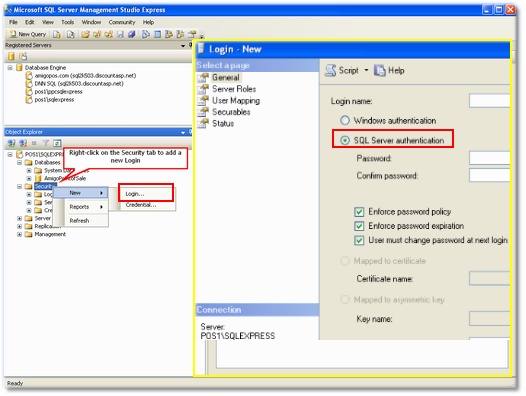
"What is the output of SELECT x'c3a1', hex('á') " came back empty. But in response to another reply, it doesn't seem my console is UTF-8 compatible. I believe you are right in thinking I don't need ICU. Perl: This is perl 5, version 18, subversion 2 (v5.18.2)
#Login sqlite mac mac#
Īs mentioned in the Topic header I'm on a Mac running High Sierra. You will need the ICU development files installed, of course. It also appears to be a loadable extension, so I'd expect that you need to before it takes effect. () You might still want it for Unicode-aware `LIKE`, sorting, and such, but it doesn't affect how the data are presented to the console. I don't think the ICU extension provides anything you need for your stated purpose. > I tried recompiling sqlite3 using '-DSQLITE_ENABLE_ICU' "" (Joking WSL or Cygwin + MinTTY would fix this.) Assuming you aren't using Windows, in which case, add a sixth step, since.
#Login sqlite mac manual#
You'll be storing the data in a format your local console will interpret correctly, so your manual `SELECT` statements in the `sqlite3` shell will produce "correct" output, however you define that term. Now, I realize this is somewhat tangential to your original question, but once you work through all of this, you shouldn't need ICU or anything special in SQLite to achieve your stated goal. If the final rendered HTML delivered by HTTP isn't marked up properly, the browser *still* won't render it as you expect, even if all 4 prior steps are done properly. Point is, this has to be Unicode-clean, too.ĥ.

There are many ways for your Perl app to provide HTTP service: `HTTP::Server::Simple`, Starman, Plack bound to an external server like Apache, or some combination via a reverse proxy server. It's what marries steps 1 and 2, and it may have other text it injects into the stream besides.Ĥ.
#Login sqlite mac code#
The Perl code processing all this data also has to be Unicode-clean for the same reason. It's file I/O, and Perl doesn't do Unicode file I/O by default, partly because Perl predates Unicode, and also because there isn't just one Unicode encoding, so you have to be explicit about what encoding you need.ģ. Hopefully you're using something like Xslate or Mason rather than hand-rolling this. The Perl HTML templating engine has to be told what Unicode encoding to use. (Could be a C server offering a different API than SQLite's in-process API, for instance.)Ģ. SQLite to whatever back-end service is continuously running, which may or may not be part of your Perl code. *All five* transition points have to be covered to get this right:ġ. Relevant stuff, you know? Maybe a tiny bit of the innermost DBI code, just showing where the data transits the boundary.

What's the platform? Details, please! (If you've posted it before, you can't expect us to remember from thread to thread.)Ĭan you post a snippet of this "rendering" code? I specifically mean your use of the `Encode::*` modules, I/O binmodes, etc. > I have to use Perl to enter and retrieve correctly rendered data. Perhaps I downloaded an incorrect library? Can anyone shed some light on this please. This after reading the Quirks, Caveats, and Gotchas In SQLite page. I tried recompiling sqlite3 using '-DSQLITE_ENABLE_ICU' after downloading a library from. Sqlite> select name from artists where artistid=1373

So my question is: am I missing something in the sqlite CLI? As far as I know I'm entering characters correctly using Alt and the Character Viewer is set to Unicode Hex Input. When retrieving data, it does not render correctly, yet my Perl script renders it correctly. Using the CLI if I try to enter a Unicode character, the sqlite shell seems to hang, and returns to a bash shell after hitting Enter. However I have to use Perl to enter and retrieve correctly rendered data. Finally got it converted to accept Unicode characters. package have a database of artists and CDs and access it in a web environment using Perl. It will create the test.db file in the root directory of the project.

His test app will create a database file, send some SQL commands to create a table, store some data in the table, and read it back and display on console. Just add the JAR file to your classpath and import java.sql.* So I needed it for a project this week and it's so simple use! I have also known about SQLite but never used it… Well I have used it through other applications but never in an app that I coded. I have been coding in Java for a while now. Just thought I'd add my answer which I also posted on my blog. I found your question while searching for information with SQLite and Java.


 0 kommentar(er)
0 kommentar(er)
